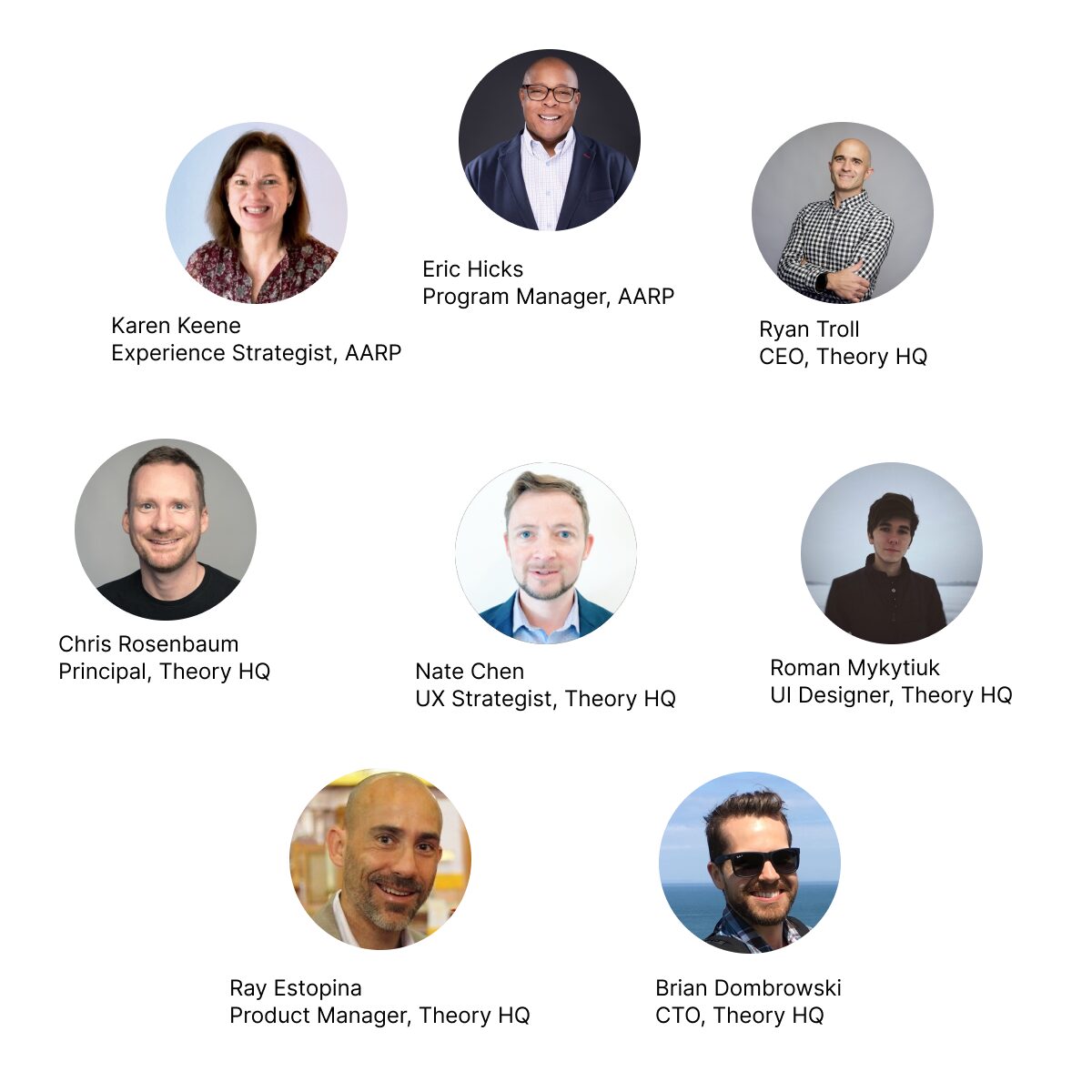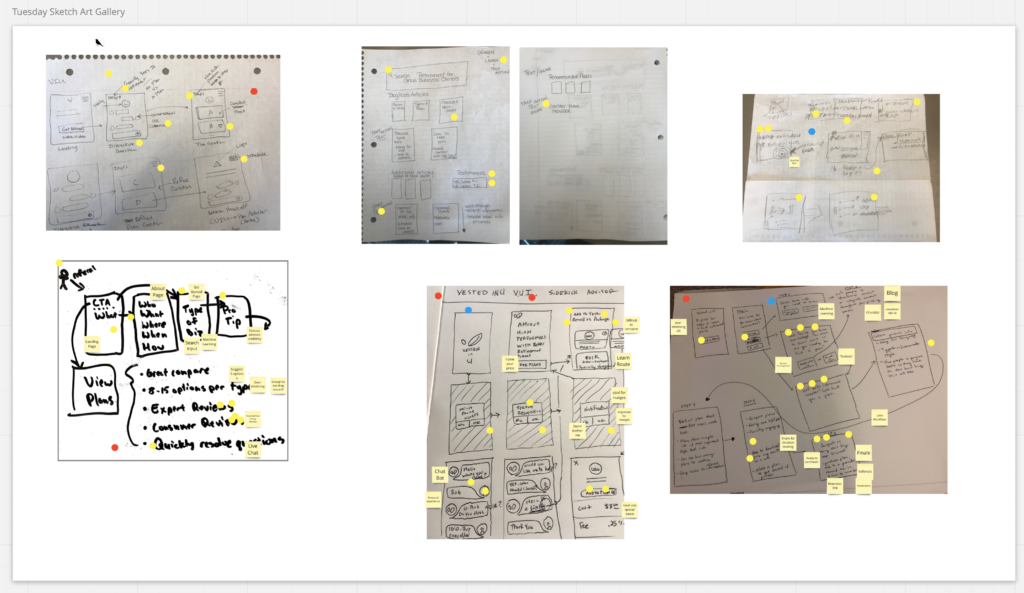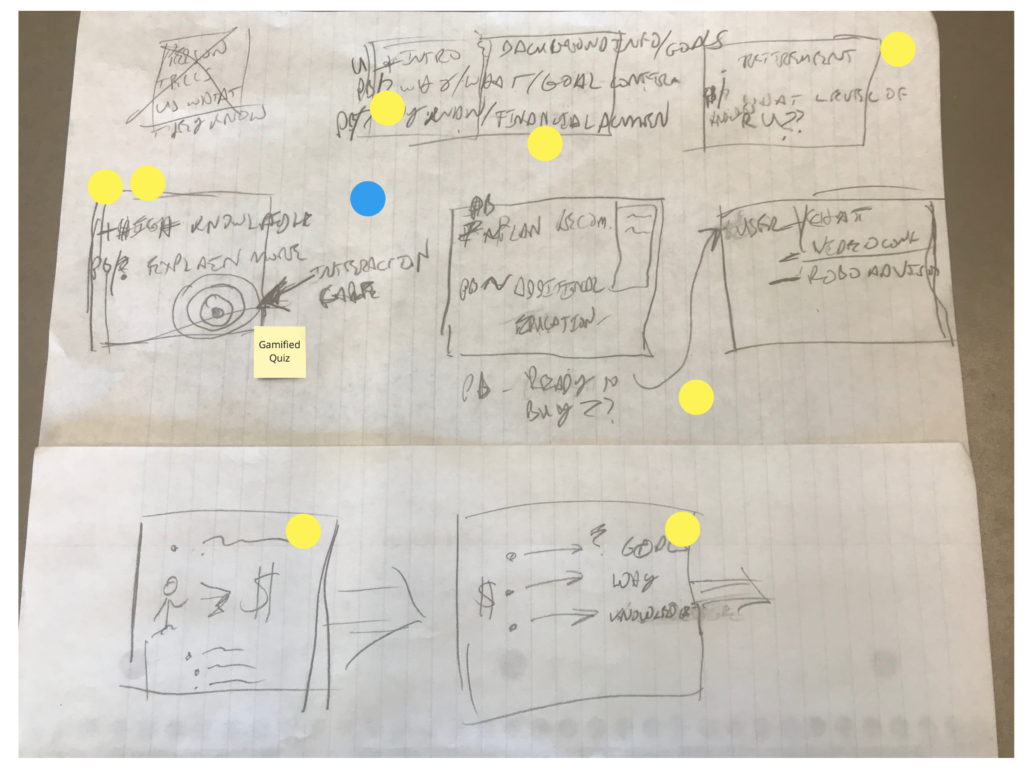
2019
Fresh off a recent Small Business Conference in DC, the AARP Innovation Lab was interested in a new program that would help increase the number of small business owners that provided employees retirement.
I partnered with Theory HQ in order to facilitate Lean UX, Design Sprint, and Design Thinking workshop that would help the team innovate and accelerate their idea to market. My role was that of a UX Strategist.

Methodology
For this workshop I combined Lean UX + Design Sprint to facilitate the team. Borrowing Jeff Gothel’s Risk Prioritization Matrix from Lean UX and combining it with Jake Knapp’s book Sprint’s 5 day process.

Discovery
Here we start with long term goals (far right), user personas (far Left), and user flow map (middle) much like a typical discovery in Design Sprint.

Here you can see our prioritization matrix. You see many people want to build things that aren’t risky and that we “know” will be valuable. But that’s not worth testing! Instead here we focus on what’s risky and unknown because that’s where hidden value is!

Our Sketch Workshop + Art Gallery from Ideation.

The “Speak and Spell” AI Chat bot won the decision making progress, but still I would A/B test it during user testing.

These were the inspiration for designing a mobile comparison UI.

Here you can see an After (left) and Before (right). On the left, we have the hybridization between NNGroup’s wireframe for Subaru, and the airline animated gif from above.

Only 20% were enthused with AI attitudinally. Behaviorally it went pretty well for usability in terms of clicks, but prolonged the process so we saw the time increase to make a decision.

This is the final user flow that did without AI and made it to production. It was an assessment onboarding flow that sent business owners to contact a vendor in the list. Vendor matching at its best I guess. Two key screens are the first, that led with business value to save employers and the comparison mobile screen!
Results
Compelling Quote from User Testing
“My best employees would have to go on strike before I would consider offering retirement as a benefit. An AI Chatbot isn’t going to convince me otherwise.” – Mitch Small Business Owner
Metrics
Increase in efficiency in deciding on comparison page.
Decrease in efficacy: inability to make a phone call.
Testimonial
“Working with Theory HQ in a design sprint is like upgrading from a Ford Pinto to a Ferrari when comparing it to our former process.” – Erick Hicks, Program Manager, AARP Innovation Labs
Lessons Learned
It was a true honor to facilitate this workshop on artificial intelligence at the strategic level with the team at AARP Innovation Lab and Theory HQ. Although, the demographic “small business owners” weren’t exactly thrilled with AI nor were they thrilled about offering more benefits to their employees, learning this up front saved AARP at least $3.3 Million dollars at the time avoiding hiring and assembling a crack Machine Learning Data Science Engineer team to build it from scratch. (This was before Chat GPT Wrappers.)
I’m proud that the comparison UI made it into production. It proved to accelerate decision making on mobile because it only showed two at a time. It wasn’t overwhelming users.
However, at the end of the experience a business owner is really just reaching out to a vendor who partners with AARP, so there’s a bit of smoke and mirrors to the experience. This has convinced me to follow in Luke Wroblewski’s foot steps when he says “get users to value ASAP.” Users don’t need to be quizzed in an assessment as much as they need the value provided. In this test, we found out that retirement is only valuable to employees, but is a disincentive to employers. Perhaps that’s why Unions have pushed for benefits similar in the past? At this rate, AARP is better off lobbying congress to expand social security and medicare than they would be going the private commercial route.

